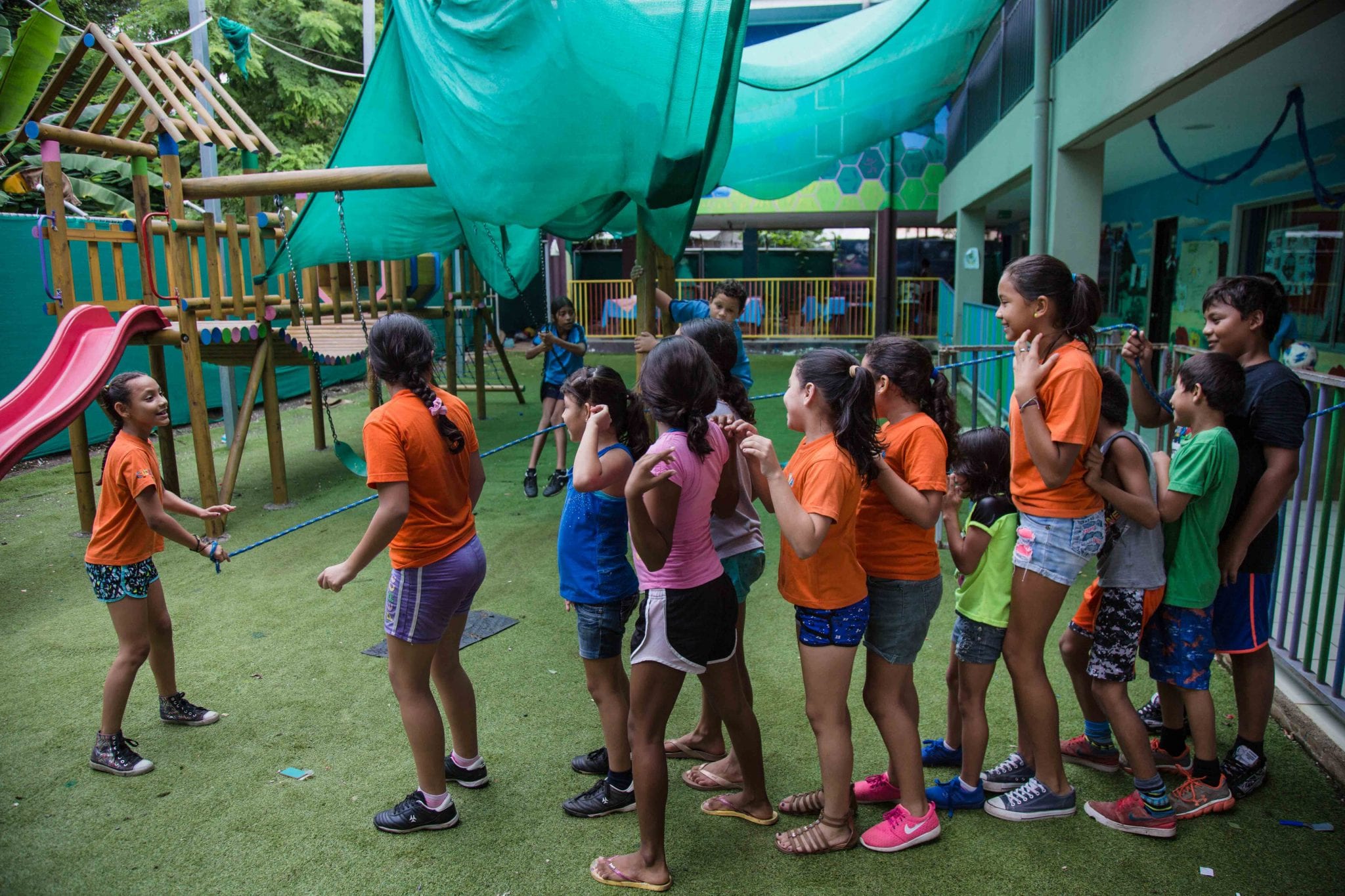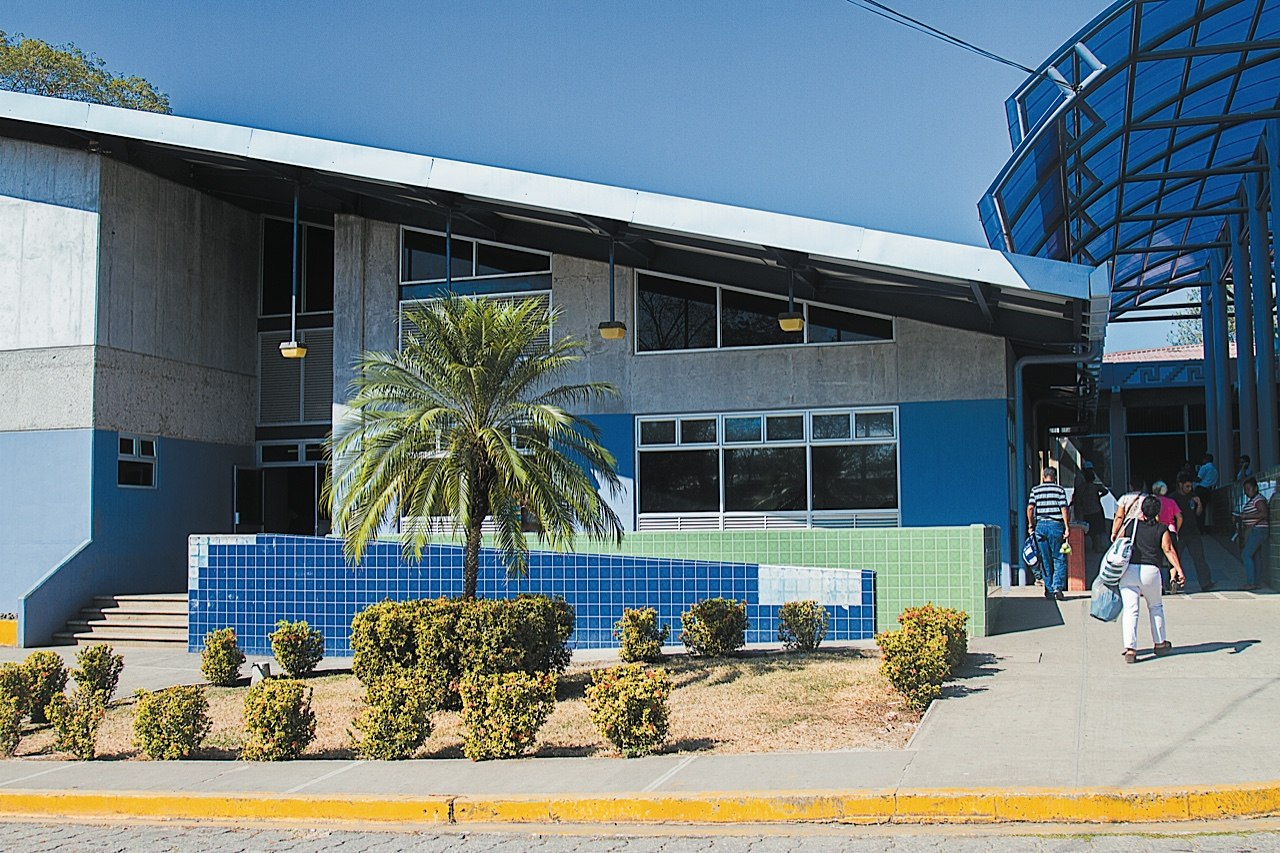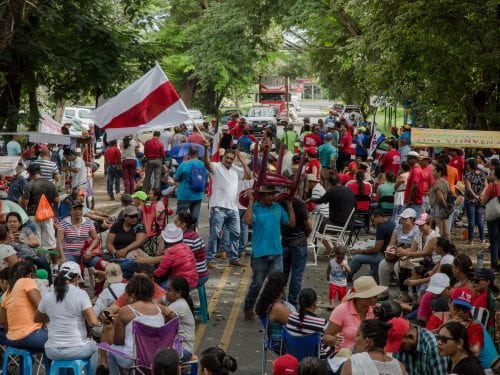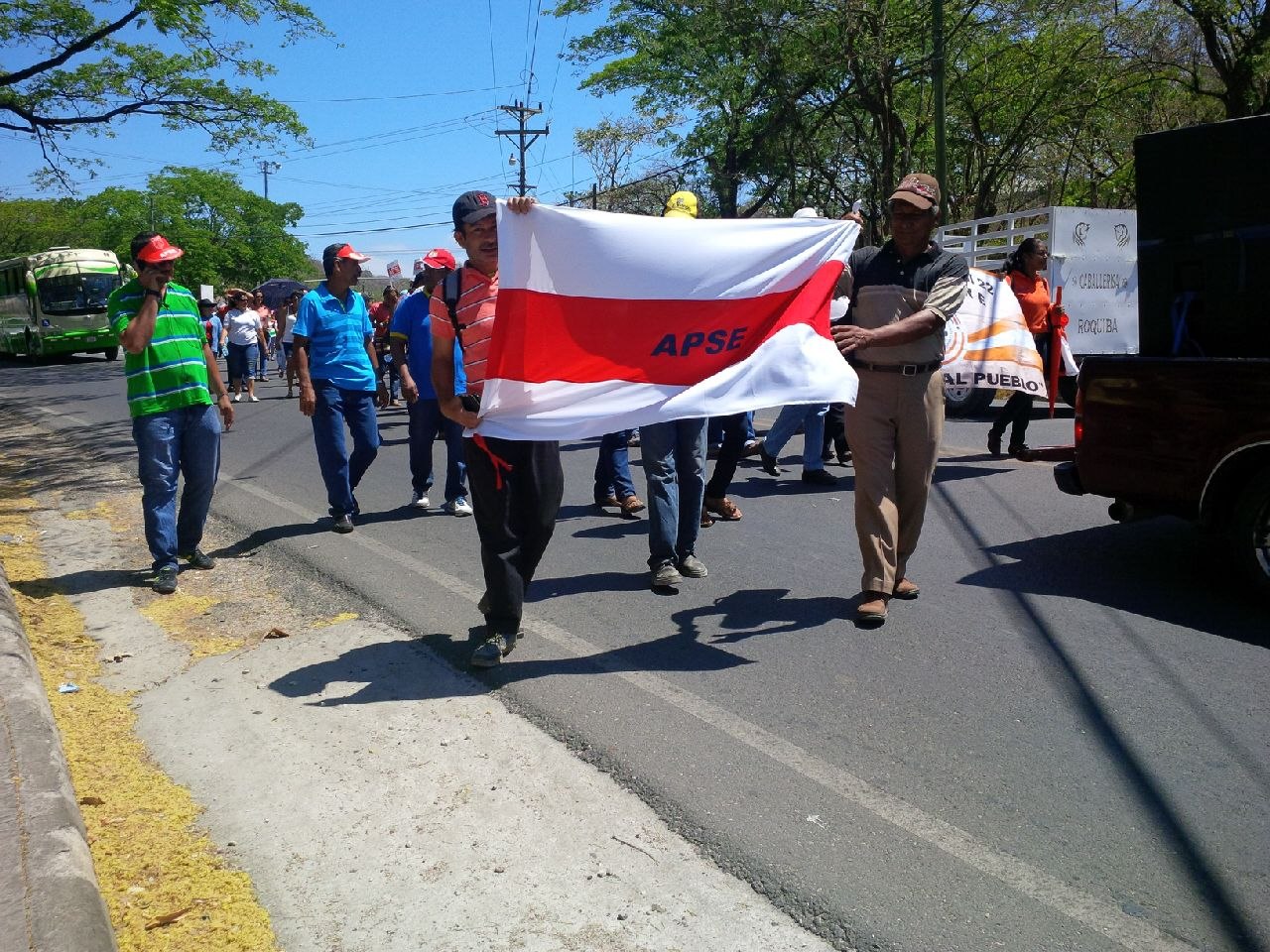
Sara throws her math, Spanish and English notebooks in her backpack, looks at his mom and asks, “Mom, we are going to school, right?”. Her mom, Ligda Valdés, says yes even though they aren’t going to the school where she is enrolled, in Portero, Santa Cruz.
As teachers enter a second month of strikes, a Potrero organization called Abriendo Mentes substitutes the role of public schools. Volunteer teachers review the contents of students’ books and notebooks and give them classes in the subjects they would normally be studying.
Other organizations like Abriendo Mentes, such as Cepia in Huacas and Crear in Sámara, have become allies to children and teenagers, filling the void left by the strike in the classroom and the cafeteria.
The three NGOs have been working with vulnerable coastal populations in Guanacaste for at least nine years. They know the children, the backgrounds the students come from and their family circumstances.
Because of these prolonged strikes, kids get behind in school and this increases the risk of dropping out,” says Lauren Morún, director of Cepia. “Moms start to look for jobs for their kids and it’s hard to get them back into school.”
The other risk is in the streets. “When kids stopped going to school, they thought they were on vacation, so at the beginning class attendance dropped and that worried us,” said Rachel Sine, director of Abriendo Mentes. “It’s not only about the classes, but also this being a safe place for them so they aren’t in the streets.”
The Extra Mile
The strike led the NGO to taking on additional challenges. For example, Abriendo Mentes was providing extracurricular activities for 29 students per month, a number that has risen to 43. The majority of their volunteer teachers are foreigners who usually give English classes and also explain the contents of other basic subjects.
Crear in Sámara had to call in reinforcements for classes in El Torito because they were receiving more kids than usual. “It was hard for one teacher to handle 30 kids,” says director Andrea Keith.
At Cepia, the pre-school teacher is paid by the Public Education Ministry and she is in strike. The NGO decided to have one of their teachers substitute for her until she returns.
The schools where children sponsored by the organizations are enrolled are closed. Schools that are far from the center of the country have been the most affected by the strike, Education Minister Édgar Mora said in an interview with radio program Hablando Claro.
Less Food on the Table
Directors of Abriendo Mentes and Cepia suspect that the strike is affecting children’s’ diets because school cafeterias are closed. Many families rely on the cafeterias to supplement their children’s’ meals.
Both organizations requested food from a foodbank -who they give a symbolic payment to- and donated it to impoverished families in the area. Cepia has supported 20 additional families on top of the 10 families that it normally helps in the two months since teachers went on strike.
It’s been really hard,” Morún said. “We increased the amount of food we requested from the foodbank in order to respond to the demand of families near Cepia who tell us that they have no food for their children.”
That demand has also risen in Brasilito and Portrero, where Abriendo Mentes works. But unlike Cepia, they haven’t been able to help additional families.
“A family comes to our offices almost everyday asking how they can sign up, but right now we can’t receive anyone else,” says director Rachel Sine.
At the start, not even the foodbank was receiving or donating food because roadblocks prevented supply trucks from leaving San José.
As food rots in school cafeterias, the NGOs have their hands tied. The minister of education says that the ministry cannot transfer money to the NGOs despite recognizing their efforts.
“It’s illegal and changing that isn’t something we can do in the near term,” Mora says.
In the Streets
Morún and Sine worry that, on top of missing classes, children and adolescents will be in the streets.
The safest and best place is in the classroom, not just for their education but also for their safety,” Sine says. “If they have a lot of free time it’s easy to get in trouble because in these rural towns there isn’t a lot to do.”
That’s why the organizations have tried to keep them busy. In Cepia, for example, the NGO gets them involved in volunteering and extracurricular activities.
“We have added some afternoon activities, so now the kids help with the swimming program,” says Morún. “We gave them life vests to motivate them, others go to crossfit, surfing or to the laboratory in order to fill up their free time.”
Will they Return to Class?
The Voice of Guanacaste asked the directors of the three NGOs this question and the response was yes, the kids will return to classes once the strike is over.
Keith from Crear in Sámara says the strike has caused serious harm to the boys and girls in the area. “As human beings we need a certain level of normality and they are out of their routines. When they go back to school it’s going to be very hard for them. I worry a lot about that.”
Hundreds of miles from the coast, minister Édgar Mora also worries that the strike could increase dropout numbers and that it will continue to impact the poorest families because of the lack of scholarships, cafeterias and education.
Inconsistency and absence of teachers is a cause of exclusion, which is why we aren’t wrong when we project an increase in exclusion,” he said.
As the strike enters its third month, the NGOs do what they can to fix the damage caused by missing classes and the lack of food on tables. Their goal is to keep them from leaving the classroom for good.









Comments